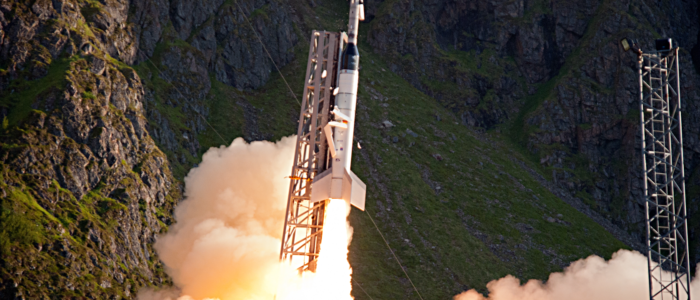Recently, there has been an increasing interest for small satellites, thus, an increasing marked for small and cost-effective launchers to serve this marked. One of the new projects is the Small Innovative Launcher for Europe (SMILE), a cooperation project under the European Union Horizon 2020 project, coordinated by the Netherland Aerospace Centre (NLR).
The project aim is to develop a launching system based on European technology to be launched from a European launch site. Related to the already existing launch site in the Northern Norway and expertise connected to developing of hybrid rocket engines, Norway is in a strong position in the future project. Andøya Rocket Range is the ideal place for launching satellites to near polar orbits and the industrial company Nammo Raufoss AS has special competence in developing hybrid rocket engines. Together with other institutes/industrial companies in five other European countries, they will develop, build and launch the launchers for satellites up to 50 kilograms.
The SMILE project aims at ensuring Europe’s independent access to space for small satellites.
The plan is to be able to launch the first satellite from Northern Norway at some time during 2020, but there are several technical and strategic choices that must be dealt with before the system can become operational.
The largest dilemma is undoubtedly the selection of launcher. Parallel, a hybrid launcher has been developed based on a technique developed by Nammo, Norway, and a launcher based on liquid fuel, currently under development by the German Aerospace Center, DLR.
The selection of launch site is not so controversial, since Andøya launch site has such an established and unique position and has been used frequently, thus, it is hard to find another more suitable site in Europe given the advantages when launching to Sun Synchronous Orbits (SSO).
Cost Reduction at All Levels and All Steps
Today, one of the problems when launching small satellites is the launching cost. To develop a cost-effective launcher system is one of the main goals for the project team, thus, the project team has identified several main points for the development such as: Reusing one or more stages, apply commercial industry-grade components, design for volume production, use of hybrid engines, automatic manufacturing of low-weight composites and reduction of associated costs.
Technologically the team wants to do the most advanced technologies to obtain an effective and low-cost launcher, such as the printing technology, composites, low cost avionics etc., in addition, a flexible payload adapter for different types of satellites. Optimising of the ground operations is also regarded a high priority in the cost-reduction.
The marked potential has had a relatively stable growth, from 150 small satellites launched in 2014 to an expected growth until between 3-400 in 2023. The large constellations of small satellites are not a part of this expectation; they will be launched with the large launchers.
Not the Only One.
The great interest for small satellites has given rise to an increased interest for developing of small launchers, and around the world, there are several projects in line to see to that. Possibly, the best-known project is the Rocket Lab’s Electron launcher. The first successful launch of a satellite was from their launch site in New Zealand in December 2017. This launcher is designed to launch satellites up to 150 kilograms into sun-synchronous orbits.
At the other end of the scale, the Japanese space agency (JAXA) launched a cubesat on a converted sounding rocket. The launcher is yet to place a satellite into orbit. Japanese companies plan to commercialize the vehicle for dedicated cubesat launches.
Also, ESA is working with several more projects under the Future Launchers Preparatory Programme (FLPP). However, most of these launchers are in the larger satellite segment, with the launch of satellites between the small 50 kilograms up to the weight class as the Vega C launcher will cover, 1500 – 2200 kg.
Andøya is not the only European launching site for such small launchers. Sweden’s Esrange is well known, but launches have also occurred on sites in Spain, and in the northern Scotland.


